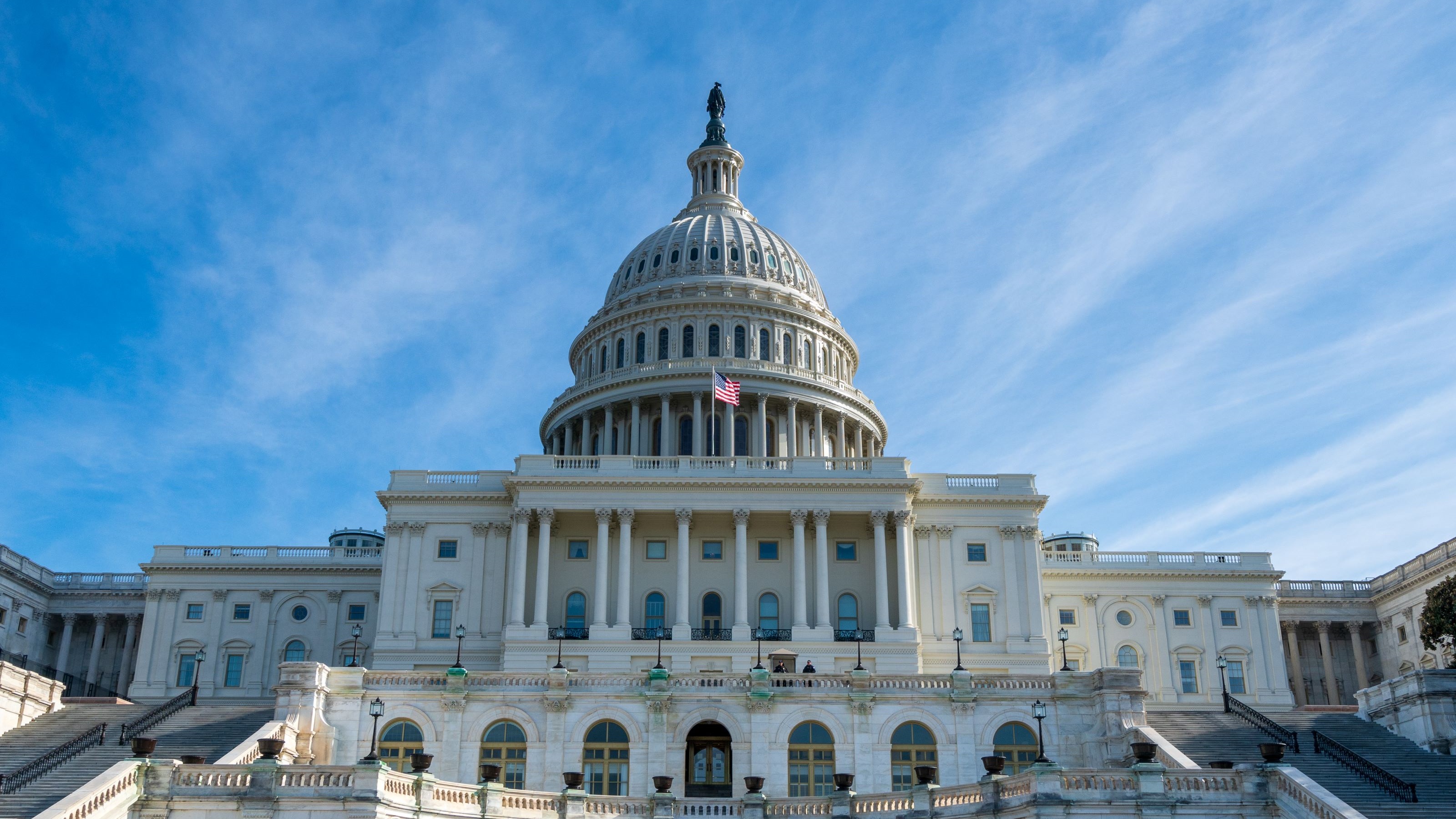Ohio Tax-Free Holiday 2025 Will Run Two-Weeks Soon: Don't Miss Out
Ohioans won't want to miss out on extended sales tax holiday savings as pressure from tariffs and inflation spikes prices.


As retail giants across the U.S. warn of looming price hikes, families looking forward to the upcoming school year are bracing for impact.
Prices for back-to-school and college supplies have been on the rise, and made worse by the Trump administration’s sweeping tariffs on imported goods. To soften the blow of rising costs, Ohio Gov. Mike DeWine announced that the state sales-tax holiday will once again run for two full weeks.
“Ohio’s sales tax holiday is a practical way we can help working families keep more of their hard-earned dollars,” said House Speaker Matt Huffman. “Whether it’s back-to-school shopping or everyday essentials, this is an opportunity for Ohioans to get more value for their money.”
From just $107.88 $24.99 for Kiplinger Personal Finance
Become a smarter, better informed investor. Subscribe from just $107.88 $24.99, plus get up to 4 Special Issues

Sign up for Kiplinger’s Free Newsletters
Profit and prosper with the best of expert advice on investing, taxes, retirement, personal finance and more - straight to your e-mail.
Profit and prosper with the best of expert advice - straight to your e-mail.
Ohio’s 2025 sales tax holiday will start on Friday, August 1, and end on Thursday, August 14, at midnight. Shoppers can get tangible personal property items priced at $500 or less tax-free.
The expanded timeframe will allow families to plan and save money on such items as books, electronics, home goods and plants, to name a few examples.
Food and beverages, including dine-in food, will also be tax-free during this period. Many other items will also be exempt, both in-store and online.
Here’s what else you need to know about the upcoming sales tax holiday in Ohio.
Ohio tax free weeks 2025
We’re barely done with graduation and prom season, but it’s never too early to start planning for the upcoming school year, especially if your child is heading to college.
While most states celebrate their sales tax holidays for a weekend, Ohio is hosting its tax-free holiday for 10 full days for the second year in a row.
Last year, the Buckeye State expanded its sales tax holiday from three days to two weeks and included a wide range of items up to $500 in addition to just school supplies to be eligible for the tax break. The tradition continues in 2025.
As noted, some tax-exempt items you can purchase in Ohio this August include, but are not limited to:
- Electronics: Computers, tablets, televisions, other gadgets
- Clothing: Apparel, footwear
- Books: Textbooks, novels; books don't have to be school-related
- Food and beverages: Soft drinks, dietary supplements, dine-in food
If you want to purchase items for your home, or your kid’s first dorm at college, you’re in luck. The sales tax holiday also includes furniture, kitchen supplies and home decor. Even indoor and outdoor plants are examples of tax-free items you can purchase during the break.
That’s a pretty sweet deal, given that the cost of clothing, toys and other essentials has been rising. Last year, the National Retail Federation reported that back-to-school spending amounted to an average of $874 per household.
For families, taking advantage of the sales tax holiday can save money. Ohio’s sales tax is 5.75%. Counties and local transit authorities can add their own sales taxes, for a combined state and local tax rate of 7.24%.
That being said, some items such as motor vehicles, tobacco products, alcoholic beverages, marijuana and vapor products will still be taxed.
Ohio sales tax holiday comes as tariffs are expected to hit hard

inCosts of popular items at the grocery aisle are expected to see price hikes due to Trump's tariff policy.
Ohio’s sales tax holiday could be a welcome reprieve from price hikes associated with Trump’s widespread tariff agenda.
As reported by Kiplinger, some states will face a higher burden than others due to the new levies on most of the U.S.’s trading partners. The impact of President Donald Trump’s tariff hikes will not only affect consumer prices but also potentially jeopardize job security for some Ohioans.
That’s because the Buckeye State is dependent on global markets to thrive economically — 7% of Ohio’s global exports (PDF) went to China in 2024.
Other top markets that receive exported goods from Ohio include Canada, Mexico, Japan and the United Kingdom. These have all been slammed by tariffs and have reciprocated.
Exports, in particular, sustain thousands of Ohio businesses and farmers.
- A total of 15,594 companies exported from Ohio locations, according to the latest government data available. Of those, 88% were small and medium businesses with fewer than 500 employees.
- Ohio was also the country’s 11th-largest agricultural exporting state, shipping $5.1 billion in goods abroad in 2023.
- Ohio is a major exporter of soybeans and corn. That could face some turmoil, given the volatility of Trump’s tariffs.
Manufacturing industries have also faced trouble in Ohio due to a trade spat with Canada and Mexico in April. American auto company Stellantis temporarily laid off 900 workers at five U.S. facilities, including in Toledo, Ohio.
Even now, Trump’s 25% tariffs on imported car parts are expected to cause car prices to increase. For some Ohioans, it might seem that price hikes are just about everywhere.
The U.S. Chamber of Commerce found that small business owners have been forced to adjust prices on their products as they’ve been unable to absorb the higher costs of tariffs. For one business owner in Ohio, the Trump administration’s tariffs on China have caused strain.
“With announcement after announcement of tariffs, including any computer accessories that I sell online, it leaves me no choice but to probably increase prices again soon,” said Amber Hawkins, President, CEO, and Consultant at Your Computer Needs of Toledo.
Given the economic climate, it’s almost certain that consumers will see slightly higher prices on back-to-school items this year — from clothes to groceries needed to pack your child’s lunch.
Don’t miss your sales tax holiday in 2025
It’s no secret that prices are on the rise, and Trump’s latest trade strategy is putting a strain on consumers like you.
The Trump administration imposed sweeping tariffs on nearly all the United States' trading partners.
- Currently, most imports face a 10% baseline duty, while Chinese goods face a 30% tariff.
- Some items, such as steel and aluminum, are facing duties as high as 50%.
- The tariffs on steel and aluminum imports could impact the price of everyday goods such as canned foods, soda, bikes and cars, just to name a few.
While some major U.S. retailers have tried their best to absorb the shock of tariffs, now many are warning of upcoming price hikes across all categories. As reported by Kiplinger, Walmart, Target, and Nike are getting ready to increase their prices in response to Trump’s tariffs.
With back-to-school just around the corner, it’s more important than ever to prepare your finances so you won’t face any surprises. The Trump administration’s tariff strategy has been unpredictable, and for now, that could equal more pressure on shoppers.
Stay tuned for more information, as some states have yet to announce their sales tax holiday dates for 2025.
Related Content
Profit and prosper with the best of Kiplinger's advice on investing, taxes, retirement, personal finance and much more. Delivered daily. Enter your email in the box and click Sign Me Up.

Gabriella Cruz-Martínez is a finance journalist with 8 years of experience covering consumer debt, economic policy, and tax.
Gabriella’s work has also appeared in Yahoo Finance, Money Magazine, The Hyde Park Herald, and the Journal Gazette & Times-Courier.
As a reporter and journalist, she enjoys writing stories that empower people from diverse backgrounds about their finances, no matter their stage in life.
-
 December Fed Meeting: Live Updates and Commentary
December Fed Meeting: Live Updates and CommentaryThe December Fed meeting is one of the last key economic events of 2025, with Wall Street closely watching what Chair Powell & Co. will do about interest rates.
-
 This Is Why Investors Shouldn't Romanticize Bitcoin
This Is Why Investors Shouldn't Romanticize BitcoinInvestors should treat bitcoin as the high-risk asset it is. A look at the data indicates a small portfolio allocation for most investors would be the safest.
-
 I'm a Federal Benefits Pro: I Answer These 2 Questions a Lot
I'm a Federal Benefits Pro: I Answer These 2 Questions a LotMany federal employees ask about rolling a TSP into an IRA and parsing options for survivor benefits, both especially critical topics.
-
 Is a New $25,000 Health Care Tax Deduction Coming in 2026?
Is a New $25,000 Health Care Tax Deduction Coming in 2026?Tax Policy A proposal from GOP Sen. Josh Hawley is adding to the chatter about health care affordability.
-
 Are You Middle-Class? Here's the Most Tax-Friendly State for Your Family
Are You Middle-Class? Here's the Most Tax-Friendly State for Your FamilyTax Tips We found the state with no income tax, low property tax bills, and exemptions on groceries and medicine.
-
 Costco Sues Over Trump Tariffs: What Could That Mean for Prices in 2026?
Costco Sues Over Trump Tariffs: What Could That Mean for Prices in 2026?Tariffs The retailer is making headlines not just for its famous hot dog and gold bars but for suing the Trump administration over tariffs.
-
 Social Security Benefits Quiz : Do You Know the IRS Tax Rules?
Social Security Benefits Quiz : Do You Know the IRS Tax Rules?Quiz Social Security benefits often come with confusing IRS tax rules that can trip up financially savvy retirees and near-retirees.
-
 New 2026 Tax Change Could Mean More for Your IRA and 401(k) Savings
New 2026 Tax Change Could Mean More for Your IRA and 401(k) SavingsRetirement Savings Here's how the new IRS inflation adjustments will increase the contribution limits for your 401(k) and IRA in the new year.
-
 Capital Gains Tax Quiz: How Well Do You Really Know IRS Investment Tax Rules?
Capital Gains Tax Quiz: How Well Do You Really Know IRS Investment Tax Rules?Quiz Take our capital gains tax quiz to test your investment taxes knowledge. Learn about loss rules, holding periods, and tax incentives that could impact your savings.
-
 6 Tax Reasons to Convert Your IRA to a Roth (and When You Shouldn't)
6 Tax Reasons to Convert Your IRA to a Roth (and When You Shouldn't)Retirement Taxes Here’s how converting your traditional retirement account to a Roth IRA can boost your nest egg — but avoid these costly scenarios.
-
 3 Ways High-Income Earners Can Maximize Their Charitable Donations in 2025
3 Ways High-Income Earners Can Maximize Their Charitable Donations in 2025Tax Deductions New charitable giving tax rules will soon lower your deduction for donations to charity — here’s what you should do now.